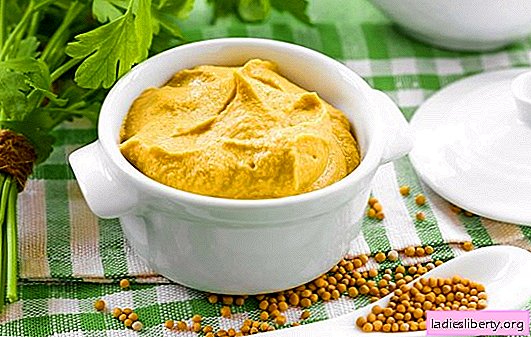
The main berry bushes of our garden and household plots are raspberries, gooseberries, and currants.
Their excellent palatability and ease of care are to the liking of many gardeners. Usually raspberries and currants do not cause much trouble, and gooseberries can sometimes differ.
If you take care of it incorrectly, its bushes can be subjected to various diseases.
Moreover, the disease in gooseberries is developing rapidly, and they must be treated quickly, otherwise you can lose the plant. The condition of the berry shrub should be monitored constantly and preventive measures should be taken during.
What are the diseases of gooseberries, and what are the measures to combat them
Fungal infections are one of the worst enemies of plants, including gooseberries. Gooseberry diseases of a fungal nature are powdery mildew, anthracnose, as well as rust, mycoplasmosis, septoria.
1. Powdery mildew
Powdery mildew or sferotek is a fairly frequent guest of gooseberry or currant bushes. The initiator of this gooseberry disease is a mushroom. In the spring, spores disperse and new bushes become infected. All parts of the plant are affected by this type of fungus. At first, a whitish coating appears, which then turns brown and becomes denser. With the disease, deformation of branches, leaves and fruits occurs. As a result, the plant dries and dies in 2-3 years.

How to treat powdery mildew? In order to prevent this fungus from threatening the plant, gooseberry varieties that are resistant to the disease should be selected at the very beginning.
• If the plant is already sick, solutions of elements of copper boron, manganese sulfate and zinc can be added to the basal area.
• For prophylaxis in spring, during budding and flowering, the bushes are sprayed with copper sulfate at the rate of 300 grams per 10 liters of water. Repeat spraying after 8-15 days, and the last spraying should not be carried out later than 15 days before collection.
• Soda ash and laundry soap. 50 g of soda and soap are diluted in 10 liters of water. This treatment is done after 10 days.
• Processing with wood ash or coal. At the rate of 3 kg per 10 liters of boiling water. The solution is sprayed with bushes with a frequency of 1 time in 10 days.
• Bleaching powder. Take 2 tablespoons of the product per 10 liters of water
• Mustard powder. 2 tablespoons of mustard powder is added to 10 liters of water. The solution is heated to a boil. Boil the composition for at least half an hour, then filter. They process the whole plant and especially young shoots.
• Inkstone. 300 g per 10 liters of water. Before treatment, the infected parts of the plant are removed. The soil on which the infected shoots were located should also be treated with this solution.
• The method of fighting with bacteria. For this, a triple portion of water is added to one part of the rotten hay or mullein, this solution is insisted for three days. Gooseberries are treated with a diluted 1: 3 composition. The bacteria of this solution, getting on the bushes, eat the fungus.
• Fitosporin.
All solutions are used three times: before flowering, during and after the leaves fall.
2. Anthracnose, control measures
Anthracnose can also affect gooseberries. It is expressed in the fact that brown spots appear on the plant, the leaves are deformed and curled. Fruits may fall or taste sour.
To get rid of this disease, the following measures are applied:
• Removing diseased branches and leaves in autumn and spring.
• Digging the soil of the plant.
• Processed with "Hom", a solution of 40 g in 10 liters of water.
• Sulfur colloidal. Sprayed at the time of flowering.
• Bordeaux mixture. 40 g of vitriol in 10 liters of water. Spend processing 2-4 times depending on the severity of the disease. Begin processing before flowering with a frequency of 14 days. In more serious cases, make a 1 percent solution.

3. Balkalny rust.
The reverse side of the leaves is covered with yellow growths, which then pass to the stems and berries. Then they become like a felt plaque. The disease usually occurs where sedge weed is present.
To get rid of rust:
• digging the soil,
• removal of sedge weed thickets,
• apply fertilizing with fertilizers with potassium and phosphorus,
• spraying with Bordeaux liquid, phytosporin and fungicides.

4. Mycoplasmosis or terry
With mycoplasmosis, the tick affects the plant's kidneys. It degenerates and the characteristic smell disappears, leaves from five-lobed become three-lobed, the brush becomes thin, the flowers are purple.
For prevention and treatment:
• remove aphids and ticks with various preparations,
• fertilize plants with complexes containing boron, manganese, molybdenum,
• Nitrogen fertilizers are not used.
5. Septoria
Septoria - characterized by the appearance at the initial stage of brown spots, which then whiten from the center, the border remains dark. With a running disease, the berries are affected and the leaves fall.
To get rid of the fungus, plants are sprayed:
• copper sulfate,
• nitrofen,
• remove affected branches,
• fallen leaves are burned in autumn,
• dig the soil.

Physiological gooseberry diseases
Also quite common with improper care, unsuitable soils.
Such disorders usually occur on bushes with a lack of nutrients.
• So, with a lack of nitrogen, the plant may slow down growth, the leaves turn yellow, the fruits fall off. Such bushes need to be fed with nitrogen fertilizers, in accordance with the dosages on the packages or spray vegetative plants.
• In case of insufficient phosphorus content in the soil, dark green and yellow-green spots appear on old leaves, shoots become thinner and buds are not developed enough, and the plant's resistance to cold is reduced.
• Potassium deficiency causes poor absorption of nitrogen and phosphorus. Leaves turn pale, then purple-brown stripes appear on them, leaves die off. The buds are formed inferior, and subsequently give the underdevelopment of fruits and new shoots, gooseberry winter hardiness is reduced.
• Magnesium deficiency also causes gooseberries and diseases. This deficiency reduces the viability of the plant, weakens the root system.
• Lack of calcium and its excess depresses the root system, while the roots become like stumps. The fight against this is to reduce watering, drain peatlands
• If the plant does not have enough iron, then the leaves and ends of the shoots turn yellow. May occur if the soil is waterlogged, insufficient organic matter, as well as during drought. In order to prevent enrichment of the soil with humus, the introduction of iron sulfate (150 g per 10 liters of water).
The disadvantages of these elements are corrected by the application of appropriate fertilizers, proper care, watering, removing weeds, digging the soil.
For a more accurate determination of the composition of the soil, analysis can be done, then you can definitely know which element is missing.
Gooseberry Disease Prevention
It consists in:
• preventing thickening of bushes, cutting out dried and damaged branches,
• collection and disposal of fallen leaves by burning,
• You can plant plants next to gooseberries that have the ability to repel pests: marigolds, garlic, dill, chrysanthemums.
• in early spring, pour boiling water over bushes to destroy spores of fungi,
• spray the bushes with a solution of zircon in early spring, to increase their immunity.











